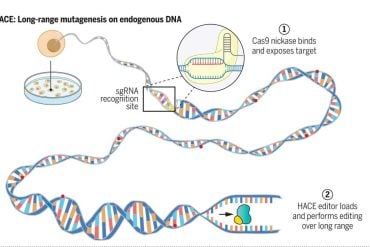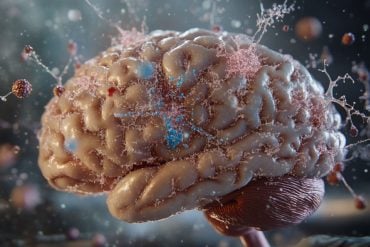Summary: Artificial intelligence was able to determine different behavioral phenotypes at different stages in the development of epilepsy in mice.
Source: NIH
By using state-of-the-art technology to analyze patterns of behavior in mice with epilepsy, researchers may be able to better study the disorder and identify potential treatments.
Researchers used the AI technology to determine behavioral “fingerprints” in mice not evident by human eye. Such automated behavioral phenotyping needed only one hour of video recording and did not require researchers to wait for the rare event of a seizure.
The study is published in Neuron.
Scientists found that this machine learning-assisted 3D video analysis outperformed the traditional approach, in which analyses rely on human observation to label the behavioral signs of epilepsy in animal models during seizures.
The labor-intensive process requires constant video monitoring of the mice over many days or weeks while recording their brain wave activity with electroencephalography (EEG).
The team led by Stanford researchers studied mice with acquired and genetic epilepsies. They found that machine analysis was better able to distinguish epileptic vs. non-epileptic mice than trained human observers.
The AI program also identified distinct behavioral phenotypes at different points in the development of epilepsy.

Notably, researchers were able to use the AI program to distinguish different patterns of behavior in mice after they were given one of three anti-epileptic drugs. This demonstrates that the tool could be used for rapid, automated anti-epileptic drug testing.
Ultimately, the use of automated phenotyping for animal studies of the epilepsies could revolutionize how research is done, speeding discovery and reducing costs.
The machine-learning technology used in the study, called MoSeq for Motion Sequencing, locates, tracks, and quantifies the behavior of freely moving mice in each frame of the video.
The information is used to train the unsupervised machine learning model to identify repeated motifs of behavior (called “syllables”—e.g., a right turn or headbob to the left). MoSeq predicts the order (or “grammar”) in which syllables occur, allowing fast and objective characterization of mouse behavior.
About this AI and epilepsy research news
Author: Press Office
Source” NIH
Contact: Press Office – NIH
Image: The image is in the public domain
Original Research: Open access.
“Hidden behavioral fingerprints in epilepsy” by Tilo Gschwind et al. Neuron
Abstract
Hidden behavioral fingerprints in epilepsy
Highlights
- Automated behavioral analysis enables high-throughput screening of epileptic mice
- Characteristic behavioral phenotypes are found in acquired and genetic epilepsies
- Inter-ictal behavior can be used to assess epileptogenesis and for drug screening
- A purely data-driven analysis can facilitate seizure assessment
Summary
Epilepsy is a major disorder affecting millions of people. Although modern electrophysiological and imaging approaches provide high-resolution access to the multi-scale brain circuit malfunctions in epilepsy, our understanding of how behavior changes with epilepsy has remained rudimentary.
As a result, screening for new therapies for children and adults with devastating epilepsies still relies on the inherently subjective, semi-quantitative assessment of a handful of pre-selected behavioral signs of epilepsy in animal models.
Here, we use machine learning-assisted 3D video analysis to reveal hidden behavioral phenotypes in mice with acquired and genetic epilepsies and track their alterations during post-insult epileptogenesis and in response to anti-epileptic drugs.
These results show the persistent reconfiguration of behavioral fingerprints in epilepsy and indicate that they can be employed for rapid, automated anti-epileptic drug testing at scale.






